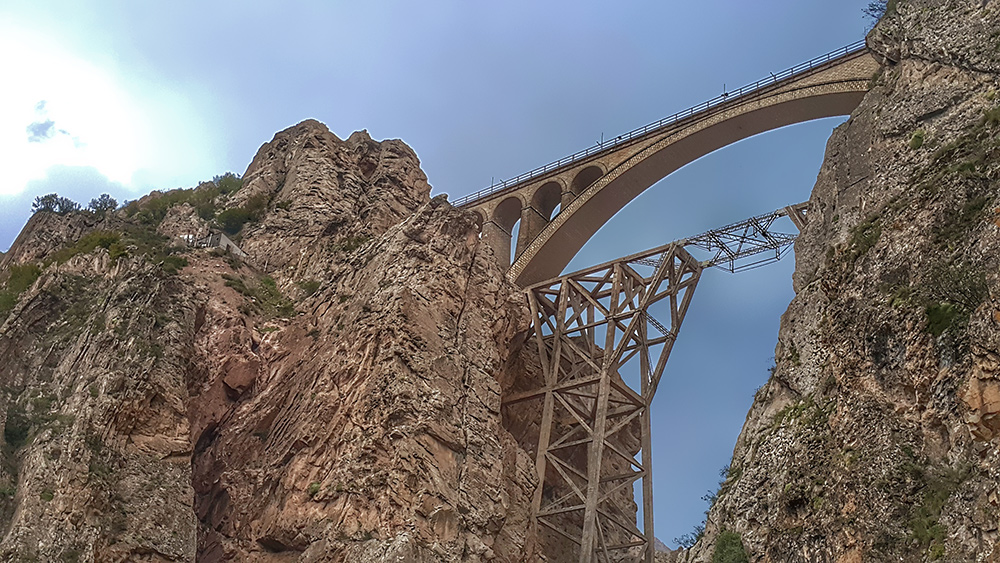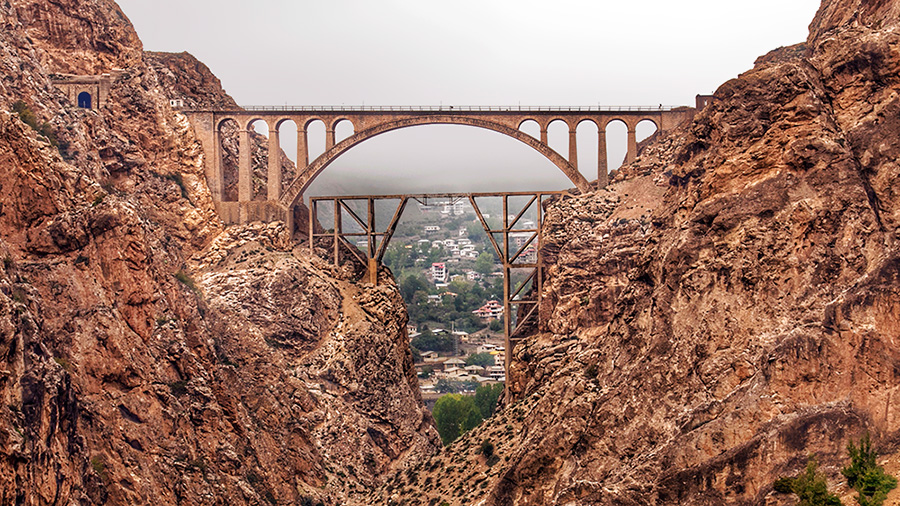 Signin with Google
Signin with Google Signin with Facebook
Signin with Facebook

 Places,Nature,History
Places,Nature,HistoryVeresk Bridge, the Born of the World War

Bridges are miracles of engineering; the ultimate intellect, taste and knowledge of an engineer and designer are evident in these historical memoirs.
Would you be interested in crossing mountains via a bridge with no metal structure by train in Iran?
What does the experience of Veresk Bridge taste?
The northern regions of Iran are mostly known for their scenic sceneries, their pristine nature and green forests. Meanwhile, there is a fascinating and exciting monolithic monument in the middle of the Alborz Mountains, which takes you through the deep valley.
As you get farther away from Tehran, you are moving towards a semi-arid nature, and while you’re on the train passing the slopes of the mountains, you will be eagerly waiting to see the unique greenery of the Caspian Hyrcanian forests, two completely different climates on each side of Alborz Mountains. Tehran and the Caspian Sea region railways are united via the Veresk bridge which connects two of the mountains in the Abbasabad area. In fact, this bridge is one of the masterpieces of engineering.
To see Veresk Bridge, you should take the train from Tehran to either the city of Gorgan or Sari and experience the pleasure of crossing a structure-less bridge at the height of 110 meters with an arch of 66 meters in length!!
Landscapes and beautiful views of Firoozkuh road, wonderful views of the northern railway, a dream destination in the heart of the nature of Mazandaran, and the forests and waterfalls of the city of Savadkuh located in the Veresk town, are all reasons enough to visit the Veresk Bridge.

Veresk was the name of a village located in close proximity to the Veresk Bridge, with 20 households living there at the time of bridge construction. Several years after the completion of the bridge, residents of this village moved to today's Veresk village, which was then known as Abbasabad. Current Veresk village has been registered as one of Iran’s National Heritage due to its unique characteristics.
Engineering matter
The Arch bridge mechanism works in a way that the weight of the bridge and its loads are transferred to its bases and a horizontal thrust which is restrained by the abutments on both sides. In the case of Veresk Bridge, the mountains make these two sides. Due to the significant height from the bottom of the valley, considering pillars in the middle of the bridge is not only an uneconomical decision to make, but it may also be impossible to implement engineering-wise. On average, bridges’ lengths vary between 40 to 500 metres, some of which are bridges that are much bigger than these, but the average range is about the same.
Veresk’s project execution began before World War II, in November 1934. The bridge was inaugurated in 1936 during the reign of Reza Pahlavi. Reza Shah personally attended the inauguration ceremony which took place in Savadkuh, his hometown. It's been narrated that in order to ease the minds of the people who feared the bridge collapse under the heavy load of the train, Shah asked the foreign engineers and their families to stand under the bridge while the first train was passing.
Victorious Veresk
Veresk Bridge is known as the Pol-e Piroozi (The Bridge of Victory). The story of this name dates back to World War II, the time when Iran played a role in assisting the Soviet Union which was besieged by the Germans.
During World War II the Allied powers were transferring goods and troops to Russia to prevent the Soviet Union lose from defeating Germany using the railways from southwest to northeast of Iran. As a result, the war broke out in winter, the Siberian cold brought the German soldiers to their knees and the Russians won the war, they abandoned the bridge, and it was then that it was called the "Bridge of Victory".
The commander of the World War II Allies once said: "If there was no Iranian railroad, the map of the world would have been different."

Simple but solid! A world heritage
The second-highest railway bridge serves the Trans-Iranian railway network and is inscribed as the new member of Iran's world heritage in the list of UNESCO in 2021. In the construction of the Veresk Bridge simplest tools and materials were used, things such as hand drills and dynamites. Almost a century has passed since the birth of this masterpiece, a bridge with no iron structure built with cement mortar, sand and bricks where a memorial of workers who lost their lives during the course of bridge construction remains near the underground tunnels under the bridge.
Trains passing through Veresk Bridge currently transfer people daily from Tehran to Sari and from Tehran to Gorgan.
By Sara Kheirdoust / TasteIran

